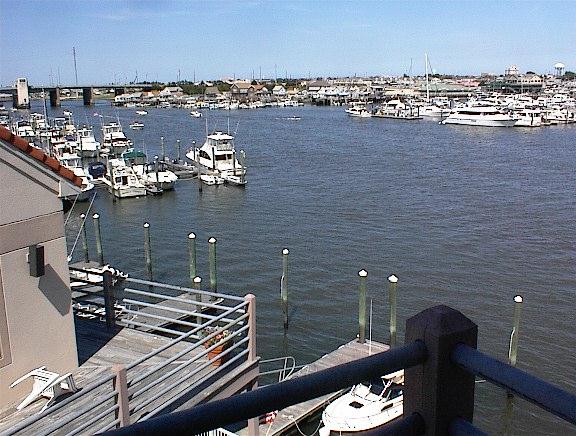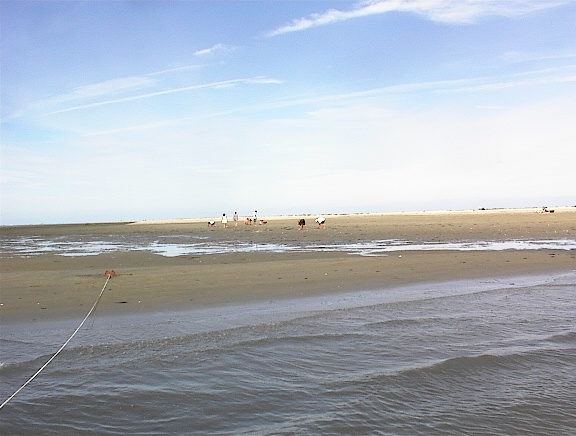When a Crop Becomes King
Like the tulip, the apple and the potato, zea mays (the botanical name for both sweet and feed corn) has evolved with humans over the past 10,000 years or so in the great dance of species we call domestication. The plant gratifies human needs, in exchange for which humans expand the plant's habitat, moving its genes all over the world and remaking the land (clearing trees, plowing the ground, protecting it from its enemies) so it might thrive. Corn, by making itself tasty and nutritious, got itself noticed by Christopher Columbus, who helped expand its range from the New World to Europe and beyond. Today corn is the world's most widely planted cereal crop. But nowhere have humans done quite as much to advance the interests of this plant as in North America, where zea mays has insinuated itself into our landscape, our food system — and our federal budget. One need look no further than the $190 billion farm bill President Bush signed last month to wonder whose interests are really being served here. Under the 10-year program, taxpayers will pay farmers $4 billion a year to grow ever more corn, this despite the fact that we struggle to get rid of the surplus the plant already produces. The average bushel of corn (56 pounds) sells for about $2 today; it costs farmers more than $3 to grow it. But rather than design a program that would encourage farmers to plant less corn — which would have the benefit of lifting the price farmers receive for it — Congress has decided instead to subsidize corn by the bushel, thereby insuring that zea mays dominion over its 125,000-square mile American habitat will go unchallenged. At first blush this subsidy might look like a handout for farmers, but really it's a form of welfare for the plant itself — and for all those economic interests that profit from its overproduction: the processors, factory farms, and the soft drink and snack makers that rely on cheap corn. For zea mays has triumphed by making itself indispensable not to farmers (whom it is swiftly and surely bankrupting) but to the Archer Daniels Midlands, Tysons and Coca-Colas of the world. Our entire food supply has undergone a process of "cornification" in
recent years, without our even noticing it. That's because, unlike in
Mexico, where a corn-based diet has been the norm for centuries, in the
United States most of the corn we consume is invisible, having been
heavily processed or passed through food animals before it reaches us.
Most of the animals we eat (chickens, pigs and cows) today subsist on a
diet of corn, regardless of whether it is good for them. In the case of
beef cattle, which evolved to eat grass, a corn diet wreaks havoc on
their digestive system, making it necessary to feed them antibiotics to
stave off illness and infection. Even farm-raised salmon are being bred
to tolerate corn — not a food their evolution has prepared them for. Why
feed fish corn? Because it's the cheapest thing you can feed any animal,
thanks to federal subsidies. But even with more than half of the 10
billion bushels of corn produced annually being fed to animals, there is
plenty left over. So companies like A.D.M., Cargill and
By far the best strategy for keeping zea mays in business has been the development of high-fructose corn syrup, which has all but pushed sugar aside. Since the 1980's, most soft drink manufacturers have switched from sugar to corn sweeteners, as have most snack makers. Nearly 10 percent of the calories Americans consume now come from corn sweeteners; the figure is 20 percent for many children. Add to that all the corn-based animal protein (corn-fed beef, chicken and pork) and the corn qua corn (chips, muffins, sweet corn) and you have a plant that has become one of nature's greatest success stories, by turning us (along with several other equally unwitting species) into an expanding race of corn eaters. So why begrudge corn its phenomenal success? Isn't this the way domestication is supposed to work? The problem in corn's case is that we're sacrificing the health of both our bodies and the environment by growing and eating so much of it. Though we're only beginning to understand what our cornified food system is doing to our health, there's cause for concern. It's probably no coincidence that the wholesale switch to corn sweeteners in the 1980's marks the beginning of the epidemic of obesity and Type 2 diabetes in this country. Sweetness became so cheap that soft drink makers, rather than lower their prices, super-sized their serving portions and marketing budgets. Thousands of new sweetened snack foods hit the market, and the amount of fructose in our diets soared. This would be bad enough for the American waistline, but there's also preliminary research suggesting that high-fructose corn syrup is metabolized differently than other sugars, making it potentially more harmful. A recent study at the University of Minnesota found that a diet high in fructose (as compared to glucose) elevates triglyceride levels in men shortly after eating, a phenomenon that has been linked to an increased risk of obesity and heart disease. Little is known about the health effects of eating animals that have themselves eaten so much corn, but in the case of cattle, researchers have found that corn-fed beef is higher in saturated fats than grass-fed beef. We know a lot more about what 80 million acres of corn is doing to the health of our environment: serious and lasting damage. Modern corn hybrids are the greediest of plants, demanding more nitrogen fertilizer than any other crop. Corn requires more pesticide than any other food crop. Runoff from these chemicals finds its way into the groundwater and, in the Midwestern corn belt, into the Mississippi River, which carries it to the Gulf of Mexico, where it has already killed off marine life in a 12,000 square mile area. To produce the chemicals we apply to our cornfields takes vast amounts of oil and natural gas. (Nitrogen fertilizer is made from natural gas, pesticides from oil.) America's corn crop might look like a sustainable, solar-powered system for producing food, but it is actually a huge, inefficient, polluting machine that guzzles fossil fuel — a half a gallon of it for every bushel. So it seems corn has indeed become king. We have given it more of our
land than any other plant, an area more than twice the size of New York
State. To keep it well fed and safe from predators we douse it with
chemicals that poison our water and deepen our dependence on foreign
oil. And then in order to dispose of all the corn this cracked system
has produced, we eat it as fast as we can in as many ways as we can —
turning the fat of the land into, well, fat. One has to wonder whether
corn hasn't at last succeeded in domesticating us. Michael Pollan is the author, most recently, of "The Botany of Desire: A Plant's-Eye View of the World." |


